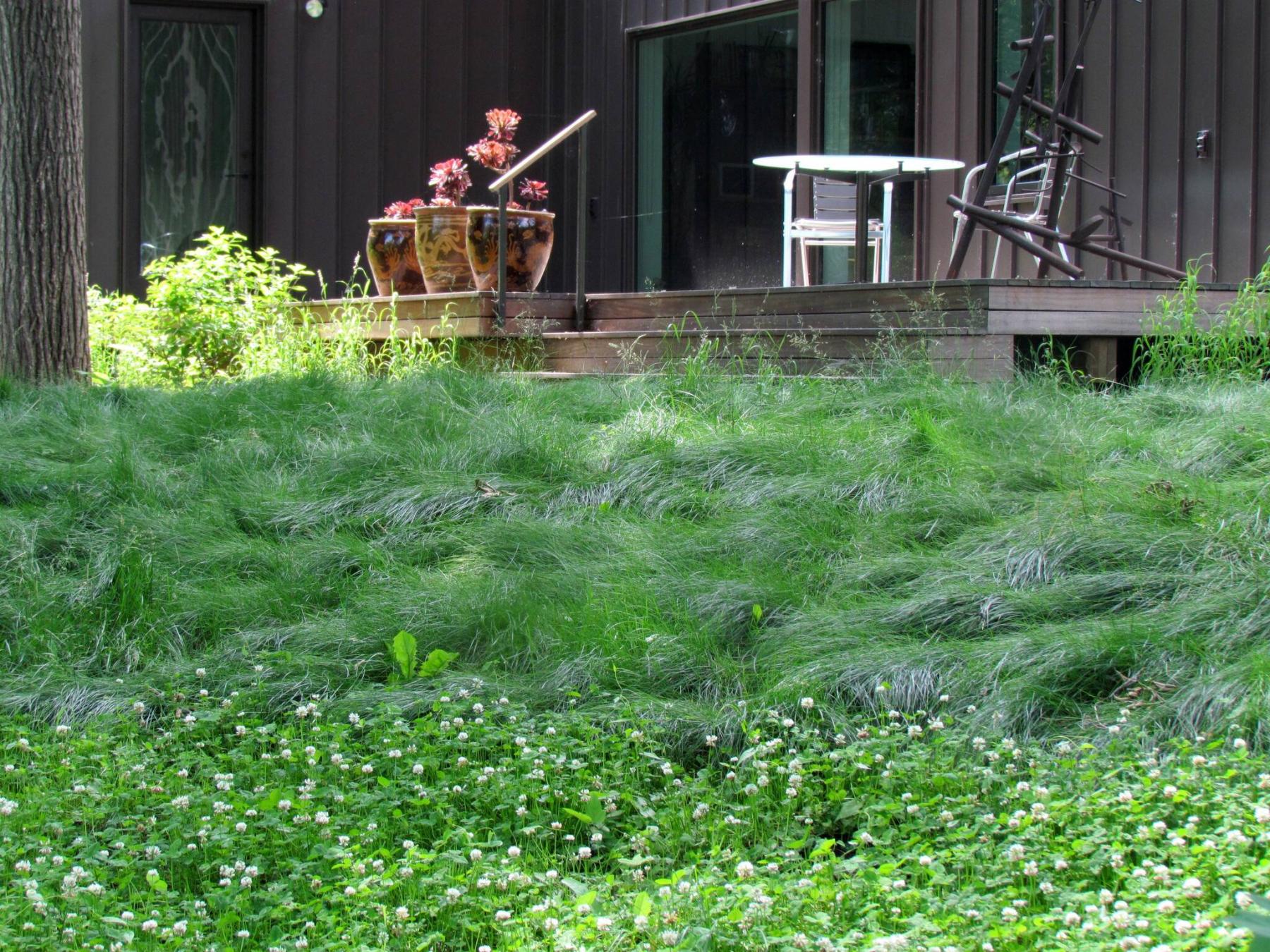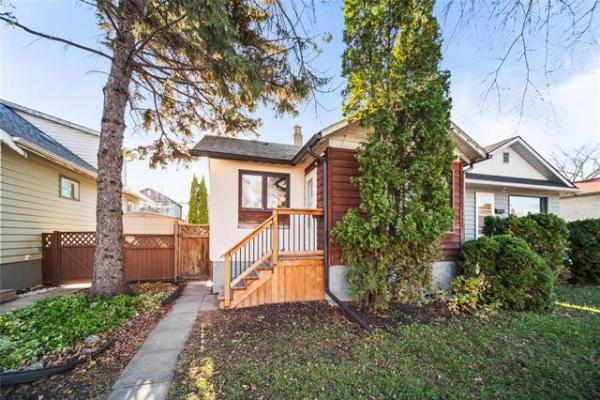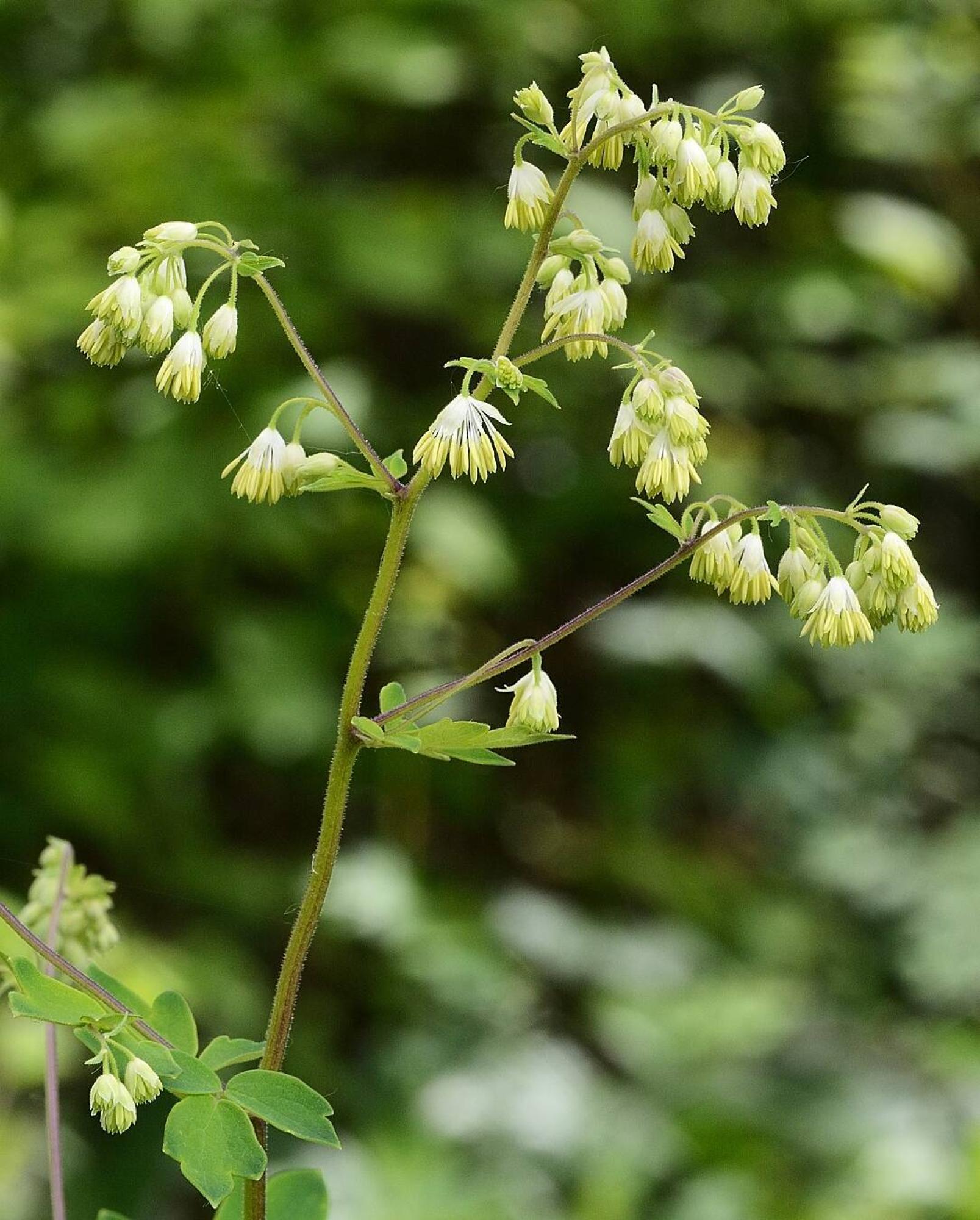
Glen Lee
Lend resiliency to your landscape with native plants such as Thalictrum dasycarpum Tall Meadow Rue.
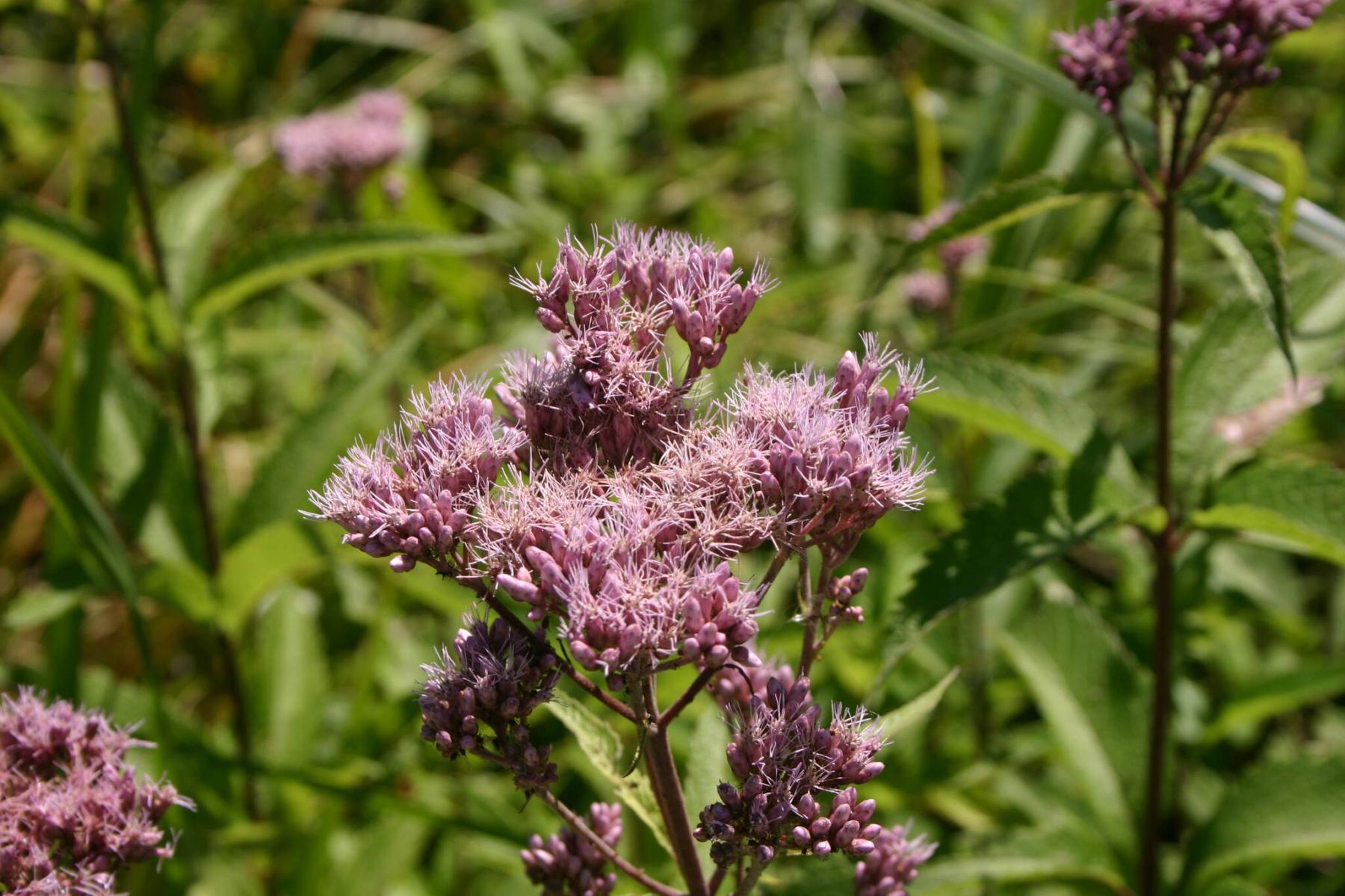
Diana Bizecki Robson
Joe Pye Weed likes moist environments and would do well planted near a drainage spout.
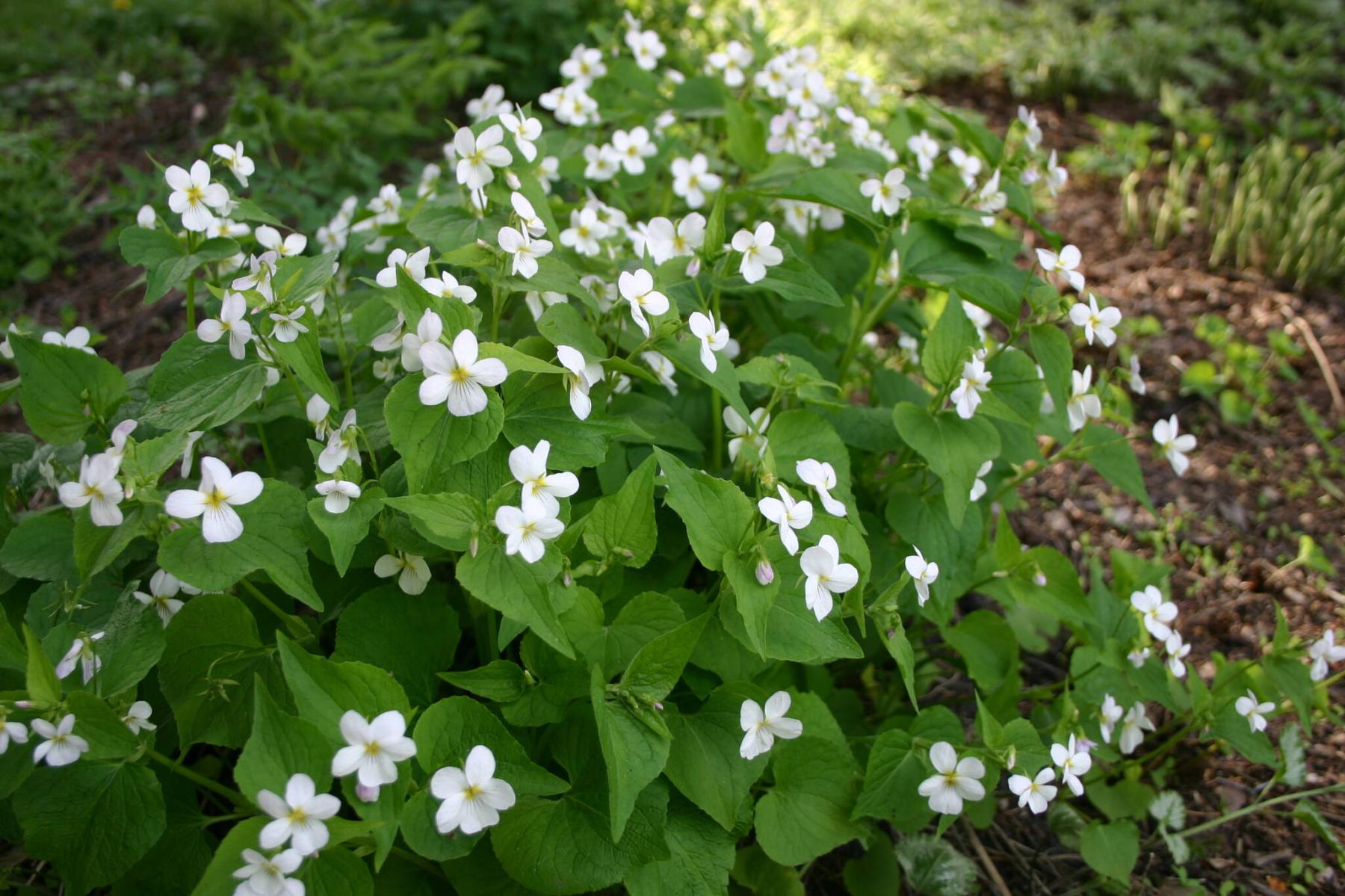
Diana Bizecki Robson
Western Canada Violet is an excellent groundcover that grows well under trees in place of lawn.
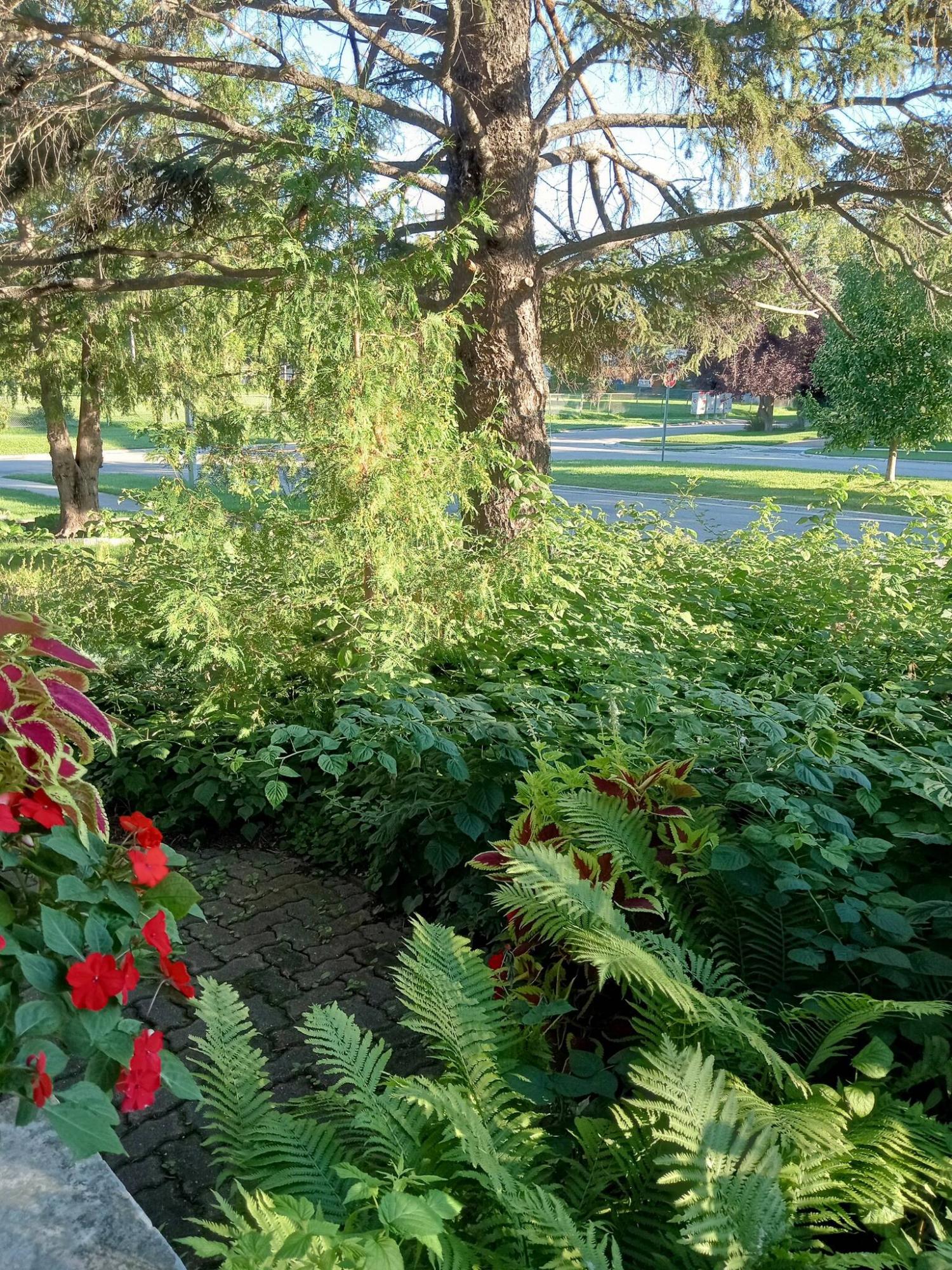
Diana Bizecki Robson
Diana Bizecki Robson’s front yard includes a large patch of wild red raspberry which is regularly visited by bees who rely on the flowers for nectar and pollen.
There is a huge opportunity in our own landscapes to reduce carbon emissions. With global temperatures expected to soar in the next five years, fuelled in part by heat-trapping greenhouse gases, according to a recent update issued by the World Meteorological Organization, taking action to adapt our landscapes to a changing climate is more important than ever.
“Climate-friendly gardening is gardening that reduces your carbon emissions,” says Diana Bizecki Robson, curator of botany at The Manitoba Museum. “There are so many things that all of us have been told to do in our gardens over the years that are unnecessary and produce greenhouse gases”, says Robson.
Consider the example of monoculture lawns. In the 18th century when influential British landscape designers such as Lancelot Capability Brown began grassing over formal gardens so that the landscape would more closely resemble the natural countryside, he ignited a passion for lawn that elevated it to an essential design element ever since.
But those old English lawns were never monocultures of grass, says Robson. “They were mixtures of grass and clover.” Clover is a low-growing legume that adds organic matter and nitrogen to the soil through its root system. “The grass-clover mix mimics the wild species compositions that you see in ecosystems,” says Robson. Clover was an important component of lawns prior to the 2nd World War, she says, however with the introduction of broadleaf chemicals during the 1940s, clover became a weed.
“I really think the route to successful gardening is to try to mimic a natural ecosystem as much as possible and that means having a mix of different species,” says Robson. “Prairie ecosystems, for example, are a mixture of grasses and legumes and legumes of course are nitrogen fixers, so they naturally fertilize the habitat.”
An important benefit of growing a lawn that consists of clover, grass, and even violets, says Robson, is that you don’t need to use nitrogen fertilizer. Both the production and use of nitrogen fertilizers lead to the release of significant greenhouse gas emissions. Fertilize your lawn with grass clippings instead, says Robson.
“Don’t rake up grass clippings after mowing and they will actually form a natural fertilizer.”
But really, the whole idea behind a traditional lawn is kind of ridiculous, she says.
“When you spend money on fertilizer and spread it on our lawn, then it grows like crazy and must be mowed. A gas-powered mower removes the grass clippings and if those are thrown into the garbage, they decompose and spew methane gas into the environment. Now more fertilizer must be added to the lawn to keep it looking green because all the nutrients were removed that were in the grass clippings.”
It’s a cycle that is designed to get you addicted to an expensive, time-consuming lawn care regimen, says Robson. Unfortunately, if you are applying a lot of unnecessary fertilizer, it ends up washing away and polluting lakes and rivers.
Instead of fertilizing your lawn with a synthetic fertilizer, try seeding it with some clover. The city of Winnipeg, for example, is working on a pilot project with Gusta Sod Farms, to test the use of clover in turf.
Another step towards reducing your greenhouse gas emissions, says Robson, is to switch from a gas-powered mower to an electric-lawn mower or a non-electric push mower. “Newer models are better quality, lighter, and easier to push,” says Robson who uses a non-electric push mower in her own yard.
Or you could reduce the size of your lawn which would also reduce the carbon footprint of your landscape.
“That’s the best thing,” says Robson. “Replace your lawn with more deeper-rooted plant species, especially native plants, because this will lock carbon in the soil.” Prairie plants sequester their carbon below ground. Big bluestem (Andropogon gerardii) and wood grass (Sorghastrum nutrans) have dense deep root systems and are two of Robson’s favourite prairie plants.
“They have lovely seed heads on them and are bunch grasses so they are well-behaved and will stay in one spot.”
Robson describes her own front yard as unconventional and says she is a wild plant gardener. Her front yard includes wild grape as well as a large patch of wild red raspberry (Rubus idaeus) which is regularly visited by many bees who rely on the flowers for nectar and pollen. Robson enjoys spending her summers wandering through the raspberry patch and picking raspberries.
“I try to introduce plants into an environment that I think they’re going to like. The wild card is that I have a lot of conifers, so my soil is a little more acidic.” Robson has experimented over the years by picking one spot in her yard that is about a metre wide, digging up existing ornamental plants which she inherited when she purchased her house, and planting native species in their place.
“Plant diversity lends resiliency to the landscape,” says Robson.
One year she planted tall meadow rue (Thalictrum dasycarpum), an upright native perennial which has drooping, creamy-green flowers and three-lobed leaflets. She also planted Western Canada Violet (Viola canadensis) which grows well in the shade under trees, produces flowers early in spring, and then for the rest of the season has lovely heart-shaped leaves.
“I think it is an excellent ground cover,” says Robson. Another option is Canada Anemone (Anemone canadensis) which has lovely palm-shaped leaves and can also be planted under trees.
Robson also recommends Joe Pye Weed (Eupatorium maculatum) which has a beautiful late-season flower display that attracts butterflies and bees. “It likes wetter areas, though, and so could do well planted near a drainage spout,” suggests Robson.
If you are planting cultivated varieties, Robson recommends choosing varieties that are not invasive and have some value to pollinators.
“For example, I have a goat’s beard (Aruncus dioicus) in my front yard and the bees love it,” she says. “It’s about creating a mix of plant species that you like but also providing habitat and food for pollinators throughout the growing season.”
Recycling organic waste into compost provides a range of environmental benefits. It is essential, though, to aerate your compost pile on a regular basis. “If you don’t aerate, then you could be getting anaerobic decomposition which actually releases methane into the atmosphere,” says Robson. How do you know if anaerobic decomposition is occurring?
“Trust your nose. If your compost stinks, that’s not a good thing.” If you have a compost tumbler, rotate or spin it a few times weekly to introduce oxygen, says Robson. “But if your type of composting involves a pile, use a compost turner which is equipped with folding wings to distribute air and moisture.”
Robson makes her own compost tea which she uses as a natural fertilizer for her container plants. She adds a big shovelful of compost from her compost bin to a large pail. The compost is secured in cheesecloth and soaked in water for five to seven days. Robson waters her container plants with the compost tea usually on the weekend and then starts another batch for use the following weekend.
colleenizacharias@gmail.com

